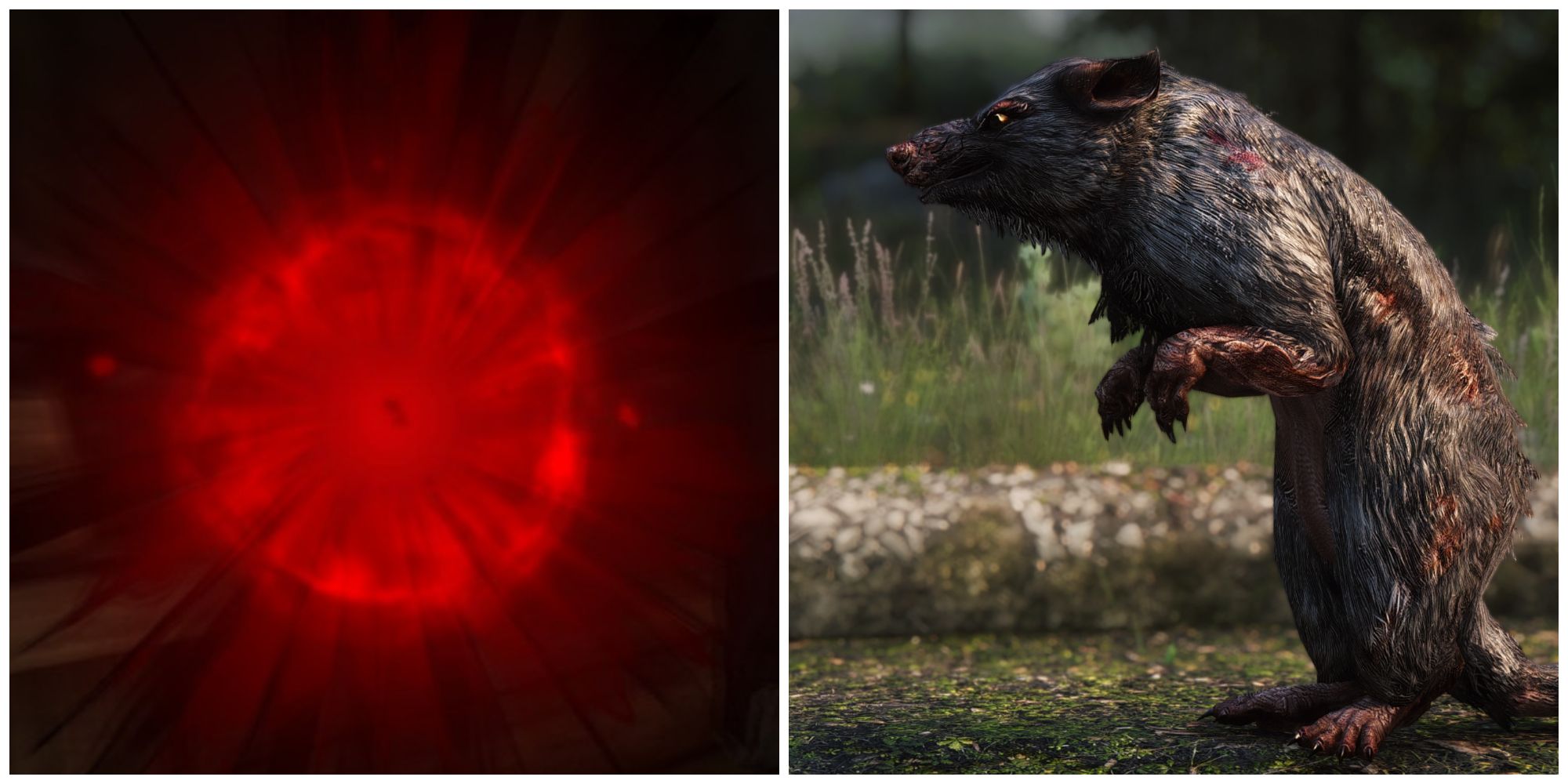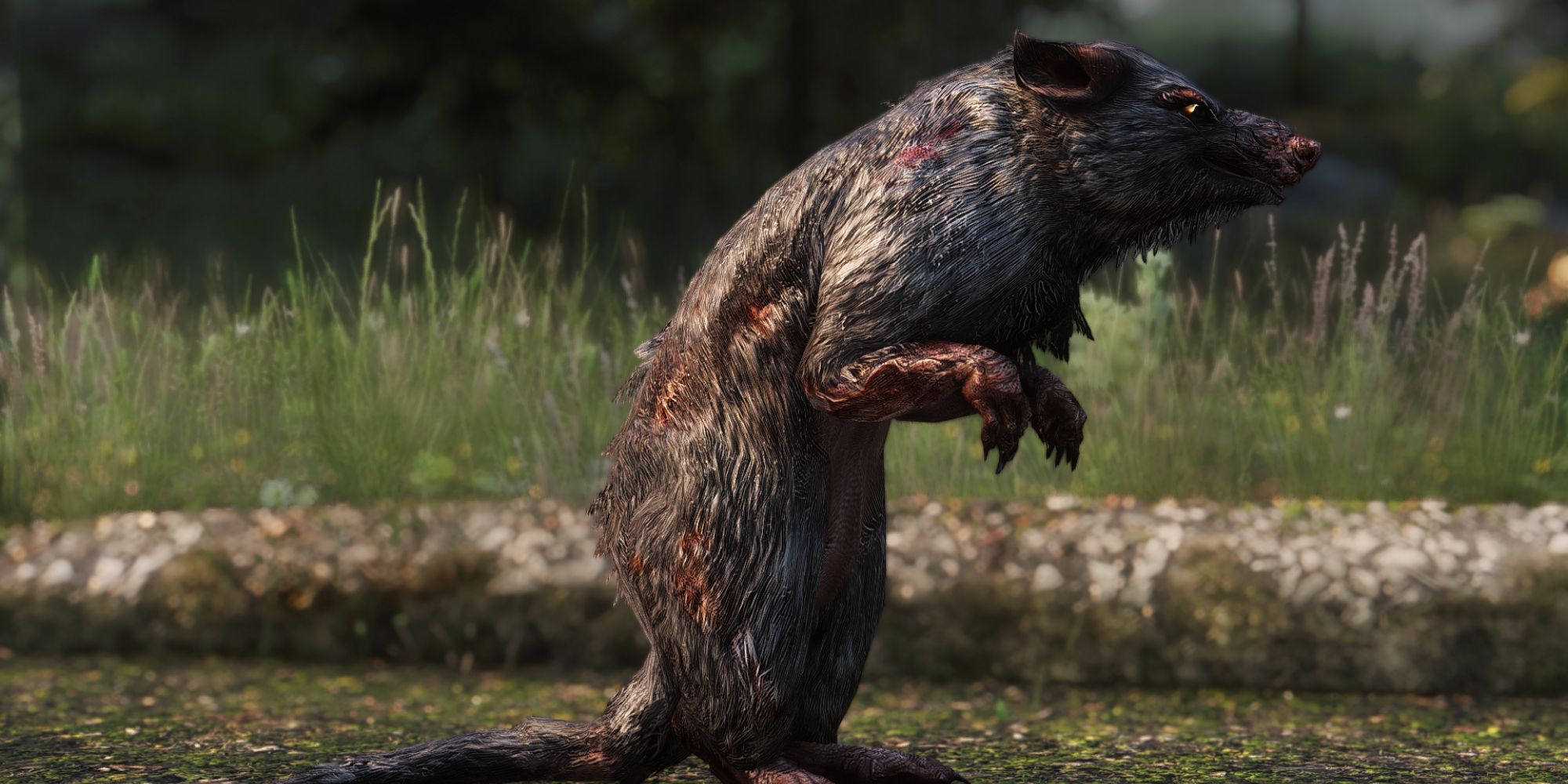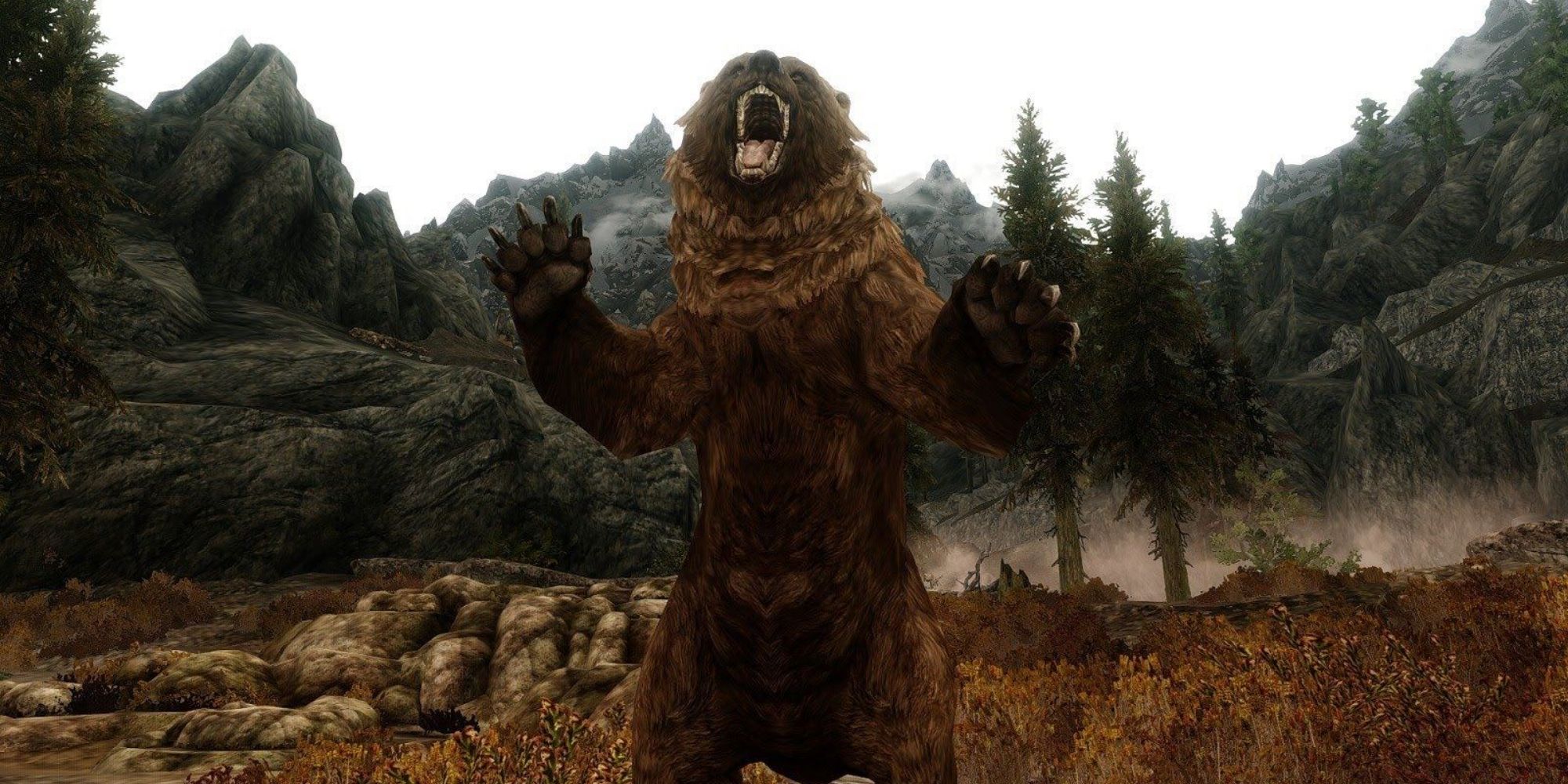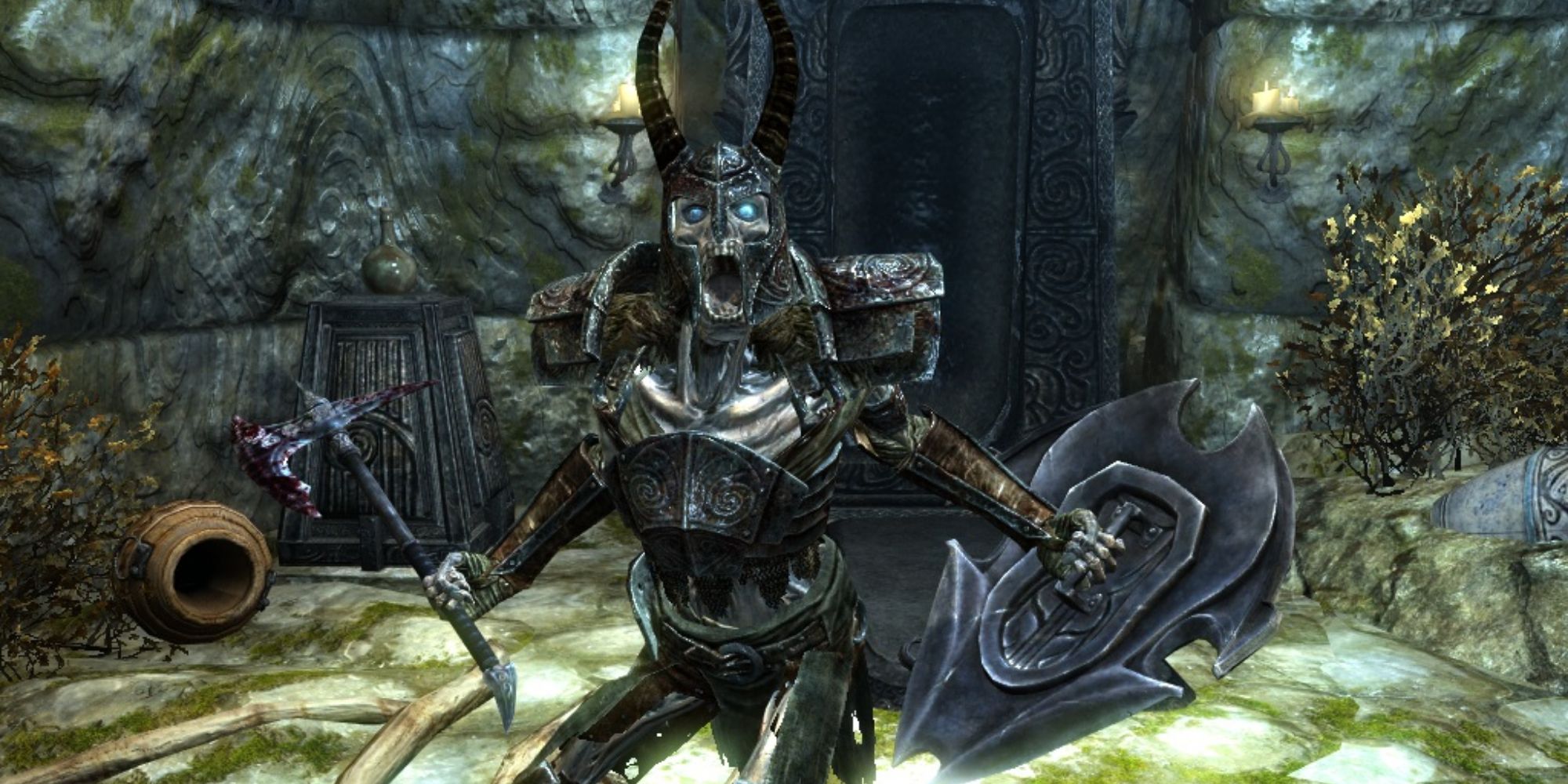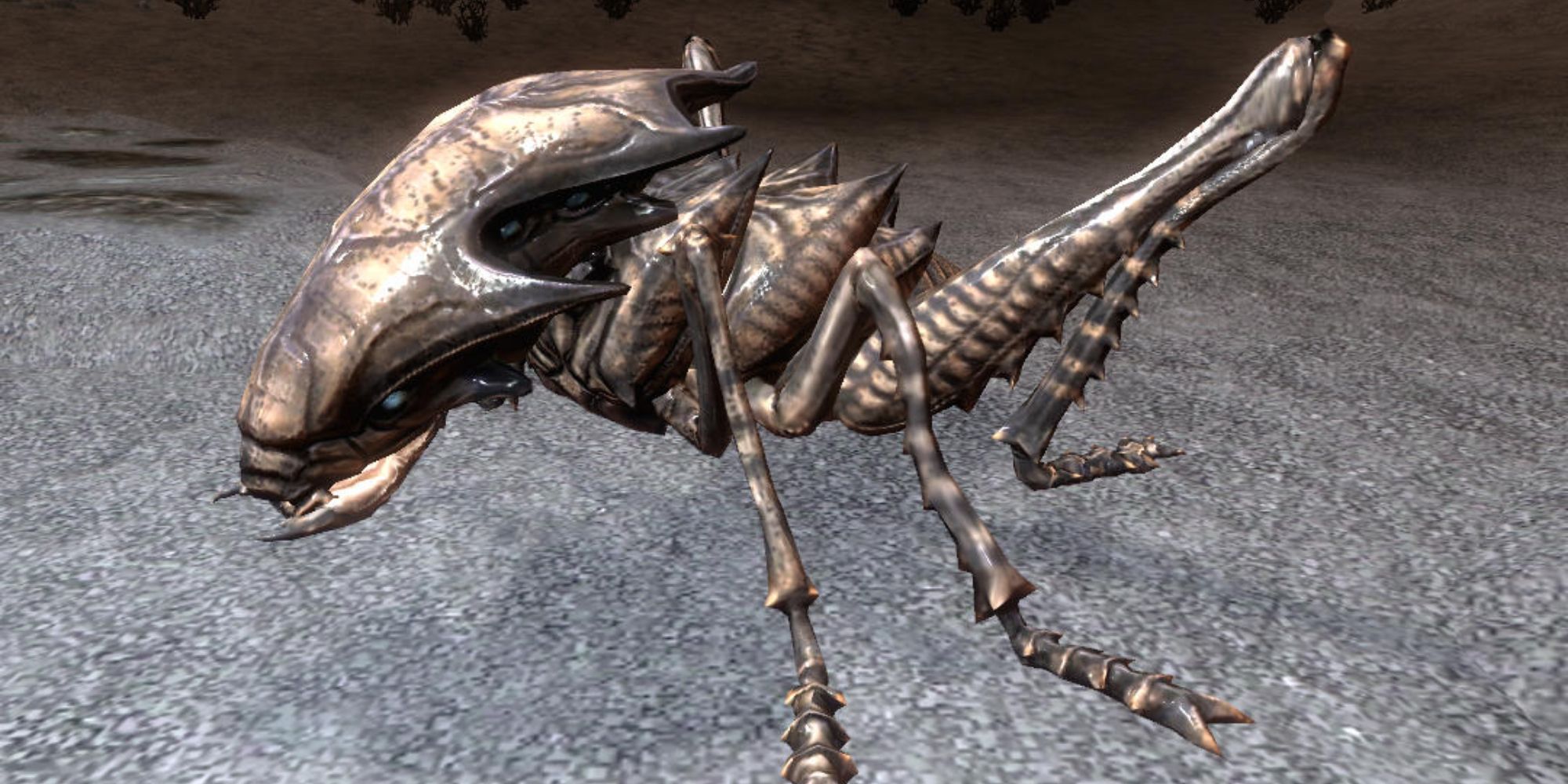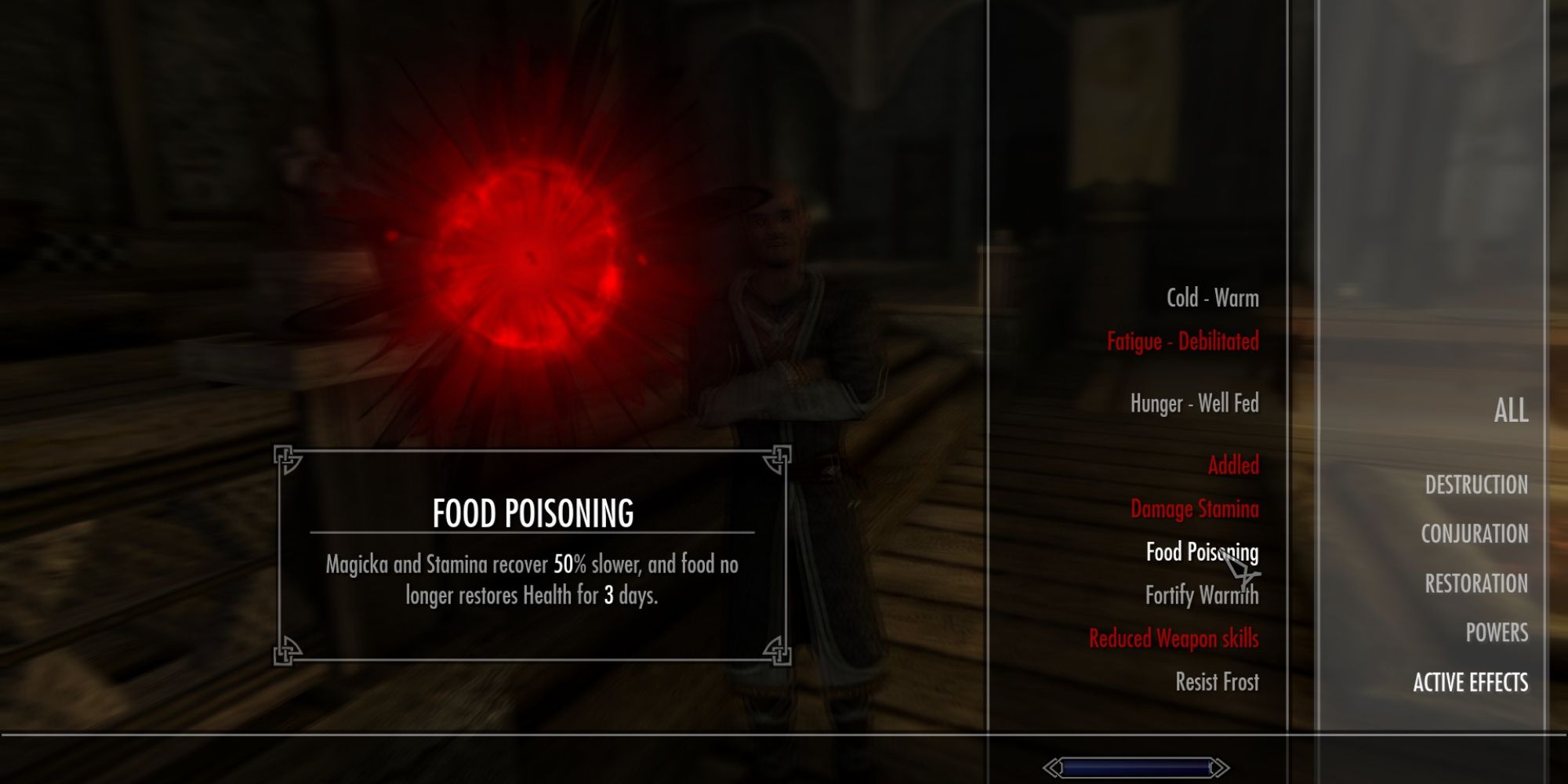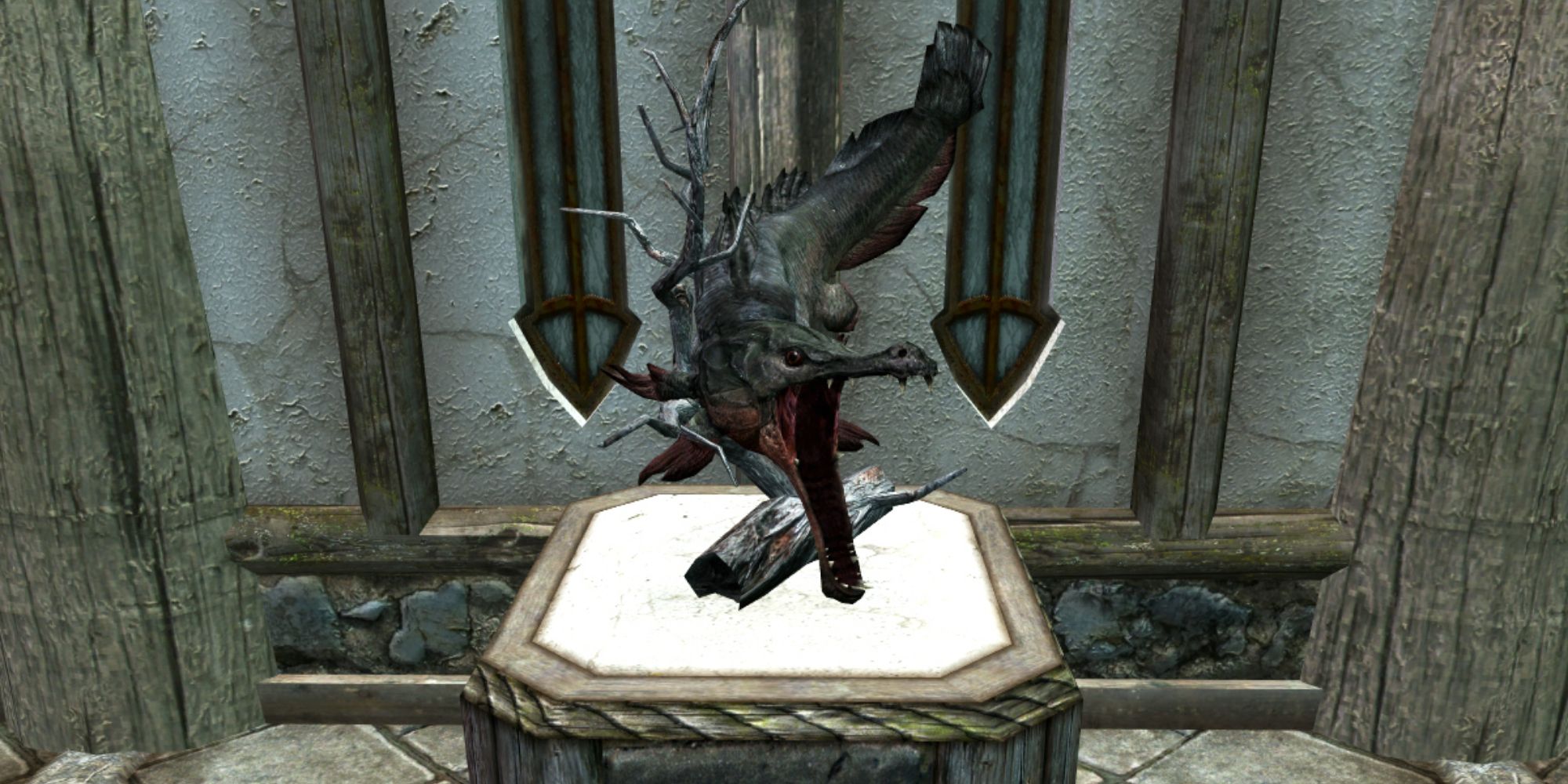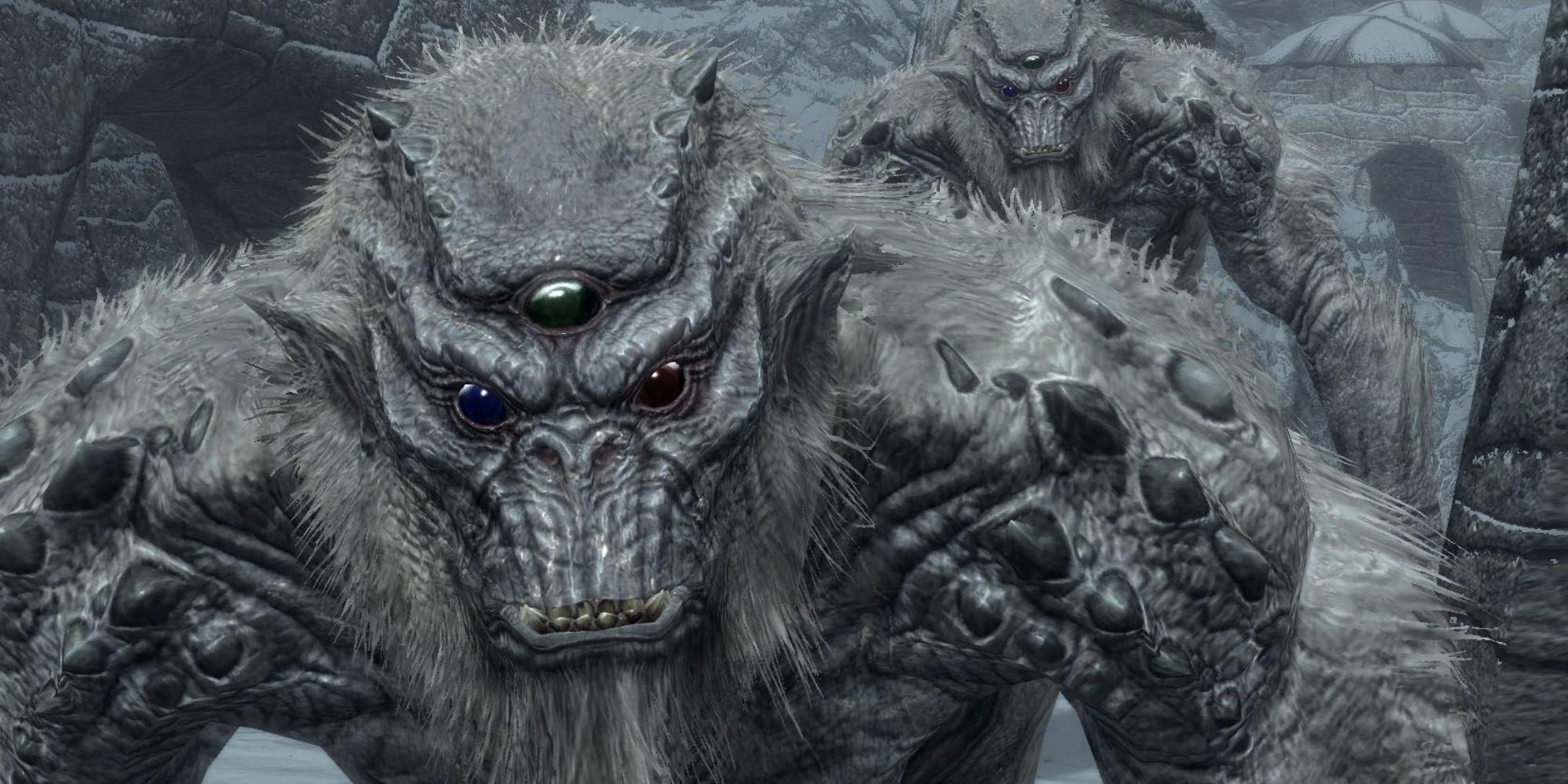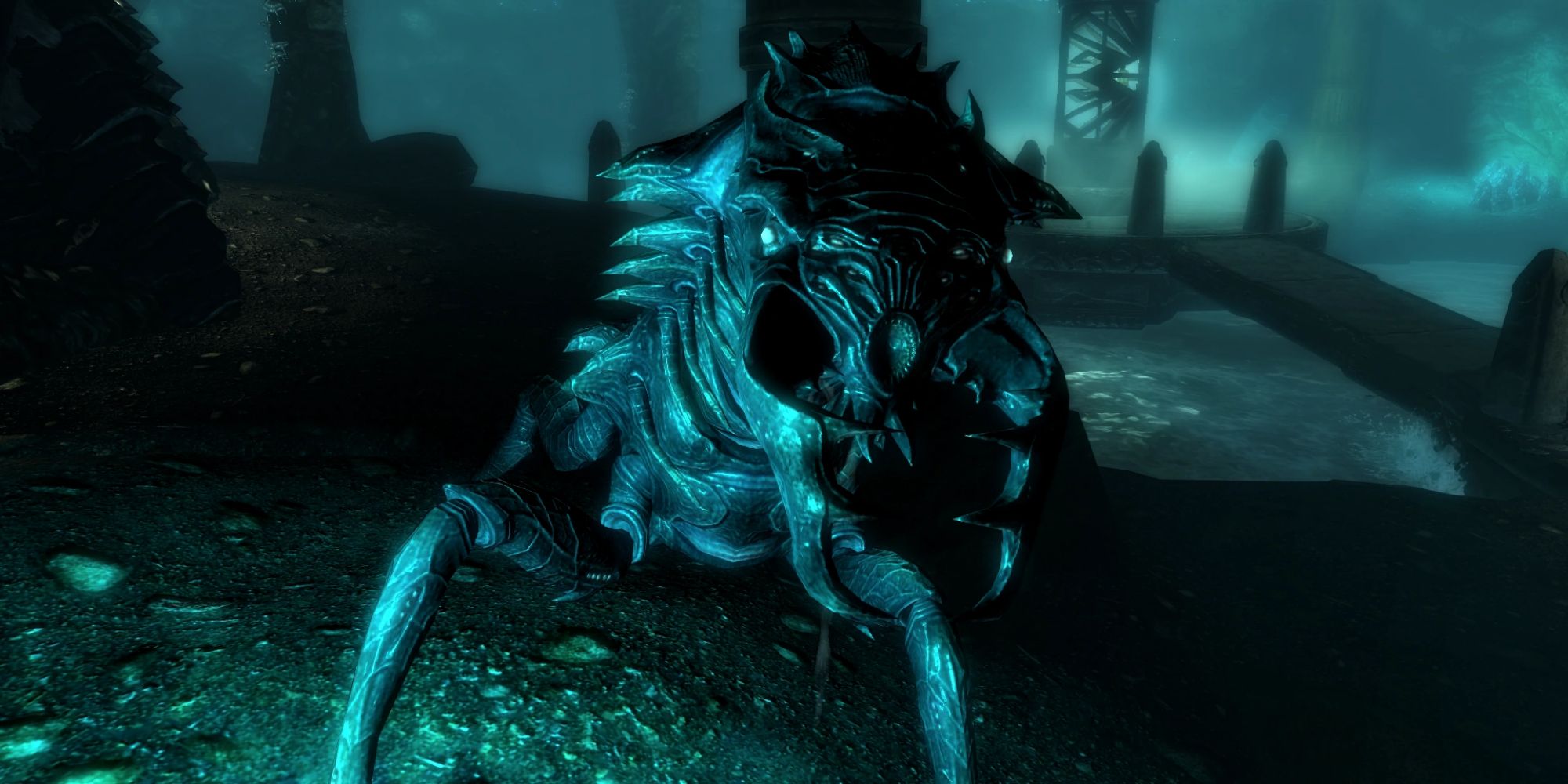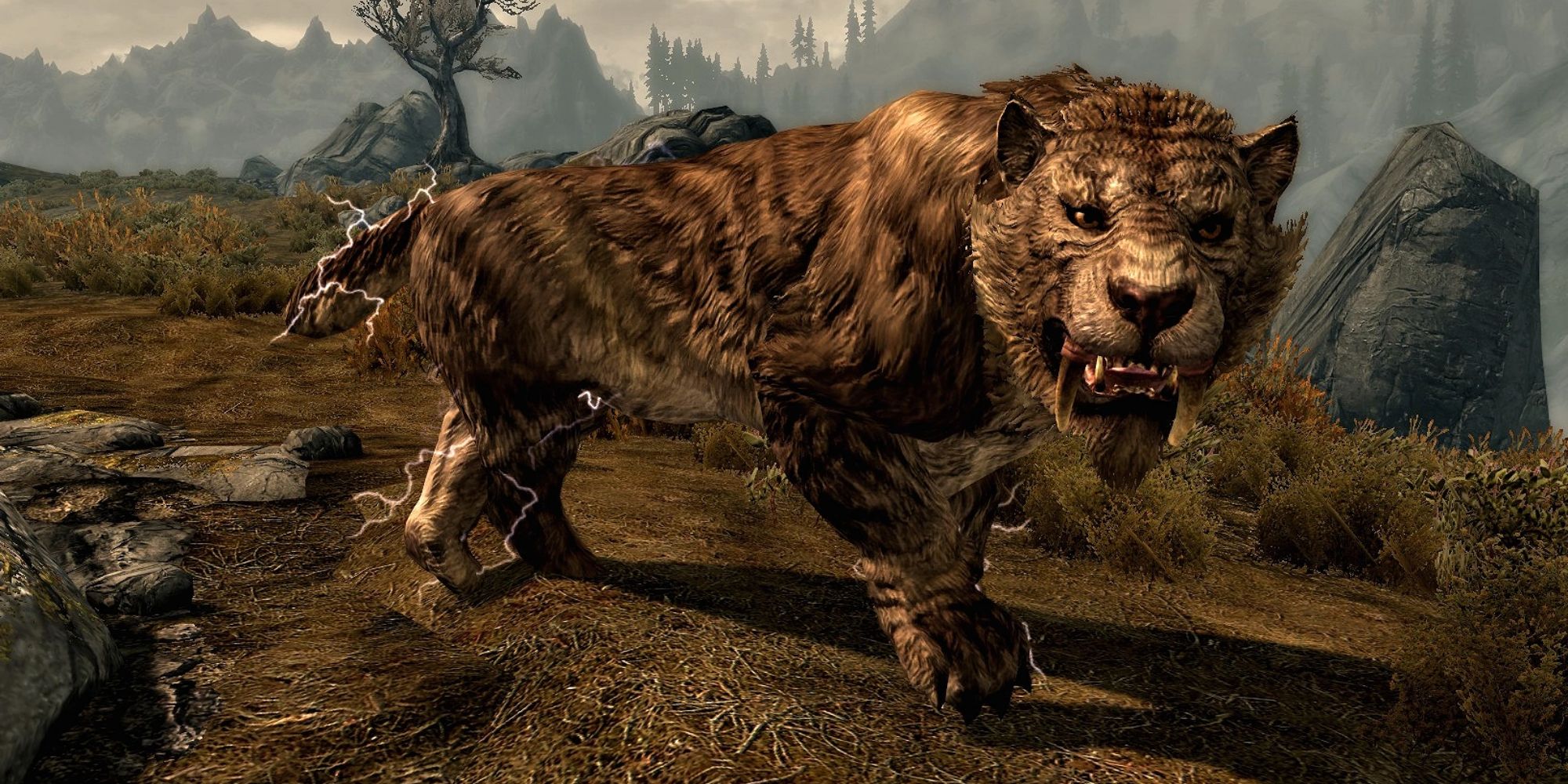Skyrim features a whole plethora of gameplay elements intended to improve immersion and enhance the role-playing aspect of the game - including diseases. Throughout their adventure in Skyrim, players can contract a number of diseases which can be cured by praying at one of the many shrines around Skyrim, drinking a Cure Disease potion, or speaking to a Vigilant of Stendarr.
Until then, however, players must suffer their harmful effects. Furthermore, if players choose to use the Survival Mode Creation, ignoring them will result in diseases progressing to even worse versions of themselves, their effects amplified. Some of them can become truly crippling, while others can have results that are difficult to reverse. Thus, it is important that players are aware of the diseases they're at risk of catching before they take their first steps out of Helgen.
12 Ataxia
The bane of thieves, Ataxia makes lockpicking and pickpocketing 25% harder (50-75% if allowed to progress). True to reality, Ataxia in Skyrim is based on a real condition by the same name that results in a loss of muscle control and coordination.
Ataxia is a common disease transmitted by traps and skeevers, and so is most likely caught when wandering the dark, dank areas of Skyrim. Ironically, charred skeever hide is a possible ingredient used to make Cure Disease potions!
11 Bone Break Fever
Players should take care when exploring the dense forests of Skyrim, or the frozen wastelands in the north, lest they run into a bear carrying Bone Break Fever.
This disease can be transmitted by traps or any of the bear variants in Skyrim, and once caught, it afflicts players with a 25-point Stamina penalty (50-75 points if allowed to progress).
10 Brain Rot
This is a common disease in Skyrim, transmitted by a variety of sources: traps, zombies, and hagravens. While hagravens are somewhat rare, necromancers who raise corpses to fight for them are not hard to find, and so Brain Rot is an affliction many players must deal with at some point.
It affects mages primarily, reducing Magicka by 25 points (50-75 points if allowed to progress).
9 Brown Rot
This disease was added by the Survival Mode Creation and is transmitted by all varieties of draugr. Thus, it is most commonly contracted while delving into ancient Nordic ruins.
Brown Rot reduces the effectiveness of light and heavy armor by 25% (50-75% if allowed to progress), while also making sleep less restful (25-75% depending on severity).
8 Droops
Droops was added by the Dragonborn DLC and is one of the rarer diseases in Skyrim, being transmitted solely by ash hoppers. Players will encounter such creatures while wandering the ashy wastes of southern Solstheim.
While ash hoppers themselves aren't particularly fearsome foes, Droops can be quite a nasty disease, reducing the damage of one-handed and two-handed weapons by 15% (30-45% if allowed to progress). Any who rely on melee weapons for survival in Skyrim would do well to carry a Cure Disease potion while traveling through ash hopper territory.
7 Food Poisoning
A disease that can only be acquired with the Survival Mode Creation, Food Poisoning is a painful affliction resulting from the consumption of raw meat. It makes the recovery of Magicka and Stamina 50% slower and prevents food from restoring Health for three days. Fortunately, Food Poisoning does not progress into worse forms, and unlike other diseases, the effects wear off after three days.
Argonians and Khajiit are naturally immune to this disease, giving these two races a slight advantage in Survival Mode.
6 Greenspore
Greenspore is a blight for any merchant and silver tongue in Skyrim, as it makes prices 25% worse and persuasion/intimidation attempts 25% harder (50-75% if allowed to progress).
It was added by the Survival Mode Creation and is transmitted by slaughterfish. Players who enjoy swimming in any of the lakes, rivers, and seas of Skyrim ought to watch out for these nasty fish, lest they find themselves with terrible prices at the next shop they visit.
5 Gutworm
Gutworm can harm anyone, reducing how much hunger food restores in Survival Mode by 25% (50-75% if allowed to progress). However, it is most damaging to players who enjoy warrior builds, as its primary effect is to reduce Stamina regeneration by 25-75%.
It is less common than other diseases, however, as it is transmitted exclusively by trolls.
4 Rattles
Rattles is a devastating disease for any Stamina-focused build, as contracting it reduces Stamina regeneration by 50%. Allowing this disease to progress in Survival Mode makes Stamina regeneration even slower, and eventually stops it altogether.
The disease is contracted by traps, as well as any kind of chaurus. Catching Rattles from chaurus can be particularly frustrating for players exploring the deep, extensive Dwemer ruins that chaurus often inhabit, so bringing a few bottles of Cure Disease potions for such expeditions would be a good idea.
3 Rockjoint
Rockjoint is a common disease owing to the frequency with which players will encounter its carriers: traps, wolves, and foxes. While foxes are not initially hostile, they can be made to attack the player by spriggans, so take care when encountering any of these creatures.
Rockjoint reduces the effectiveness of melee weapons by 25%, and if allowed to progress, 50% and 75%.
2 Sanguinare Vampiris
This is a rare and unique disease with one of the most interesting effects of any disease in Skyrim. It is transmitted only by vampires using the Vampiric Drain spell, and each time players are hurt by this spell they have a 10% chance of contracting the disease. It reduces the player's Health by 25 points.
The effects of Sanguinare Vampiris do not get worse. However, if this disease is not treated for three days it will turn into full-blown vampirism! Vampirism comes with many negative effects, but it does have its benefits: including 100% resistance to the rest of the diseases in the game.
1 Witbane
Witbane is a detriment to mages, for it reduces the recovery of Magicka by 50%. If it is allowed to progress untreated, Witbane will eventually halt Magicka regeneration completely, which would put any Magicka-based build in a tough spot.
Fortunately, Witbane is only transmitted by traps and sabre cats, so taking care around both these carriers is a good preventative measure - but carrying a Cure Disease potion or the ingredients to make one wouldn't hurt.
Diseases in Skyrim can be cured, but the best way to deal with them is to prevent them in the first place. Argonians and Bosmer are 50% resistant to diseases, and the Spell Absorption ability of Bretons also protects against them. Players can also enchant items to improve disease resistance, and becoming a vampire or werewolf will grant total immunity to all of them. The important thing is to be prepared!
The Elder Scrolls 5: Skyrim is available now for PC, PS4, PS5, Switch, Xbox One, and Xbox Series X/S.

